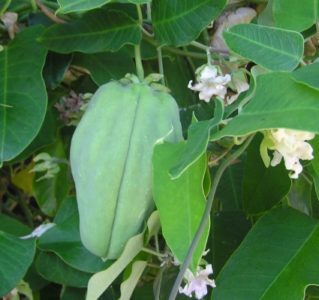
It’s the plant nobody wants in their garden – an unwelcome house guest, to say the least.
Moth plant, otherwise known as ‘cruel plant’, has been a threat across Auckland for quite some time and is now making its presence known in neighbourhoods across east Auckland.
Originating from South America, the moth plant grows at a rapid rate, dominating and smothering existing native vegetation.
With the ability to generate between 250 and 1000 seeds in a single seed pod, which can then burst and travel up to 40 kilometres by wind currents, the potential for further dispersal of seeds if left untouched poses a significant threat, said Council’s general manager of Environmental Services, Gael Ogilvie.
For the past three years, Howick Local Board (HLB) has worked alongside Auckland Council’s Biosecurity and Biodiversity teams on a range of initiatives aimed at encouraging residents to voluntarily deal with the eradication of moth plant from their property.
Free bins were set up for two weeks at Lloyd Elsmore Park to allow residents to dispose of pest plants, a weed swap was held where residents could exchange weeds for a native plant, and brochures, newspapers, posters and letter drops advertised the initiatives.
The programme has now finished for 2017 and will likely be run again next year, confirmed Howick Local Board member John Spiller, but a Pakuranga resident who contacted the Times anonymously said the current initiatives “simply aren’t enough”.
He has a neighbour who hasn’t yet removed the moth plant from his/her property, and is worried it won’t be long before the weed spreads into the back yards of neighbouring homes, including his own.
Under the current Regional Pest Management Strategy, moth plant is required to be controlled on properties within the Waitakere and Hunua weed control zones as well as coastal areas of the Hibiscus Coast and Hauraki Gulf Islands, but within the Howick ward, the plan for eradication lies with community initiatives.
“Council and the Howick Local Board are trying to encourage private landowners to voluntarily take responsibility for the eradication of moth plant, and rhamnus (evergreen buckthorn), on their own properties,” said Mr Spiller.
“Currently there is no bylaw requiring landowners to remove either species on their own property, however if bio security are alerted to a major infestation on private property, they are often prepared to collaborate with the owner to try to find a practical solution towards removal of the plants on the subject site.
“I do not believe it would be practical to legislate against every known weed species that exists in the region so that is why the HLB supports an on-going programme of education and voluntary action.”
The best way to remove this plant from your property is to:
- dig out the plant close to the ground including the root system
- cut and treat the vine with herbicide
- hand-pull the vine from the ground, when the ground is wet or damp
- cut vines can be placed in home composts, however it is important that the pods are first removed and placed in either your household rubbish or in your garden service bins. Pods must not be placed in home composts as they will germinate
- take caution and wear gloves and wash hands thoroughly after handling the plant. The milky white sap can irritate skin and the seed pods are harmful if consumed by humans or animals









